Physical Address
304 North Cardinal St.
Dorchester Center, MA 02124
Physical Address
304 North Cardinal St.
Dorchester Center, MA 02124
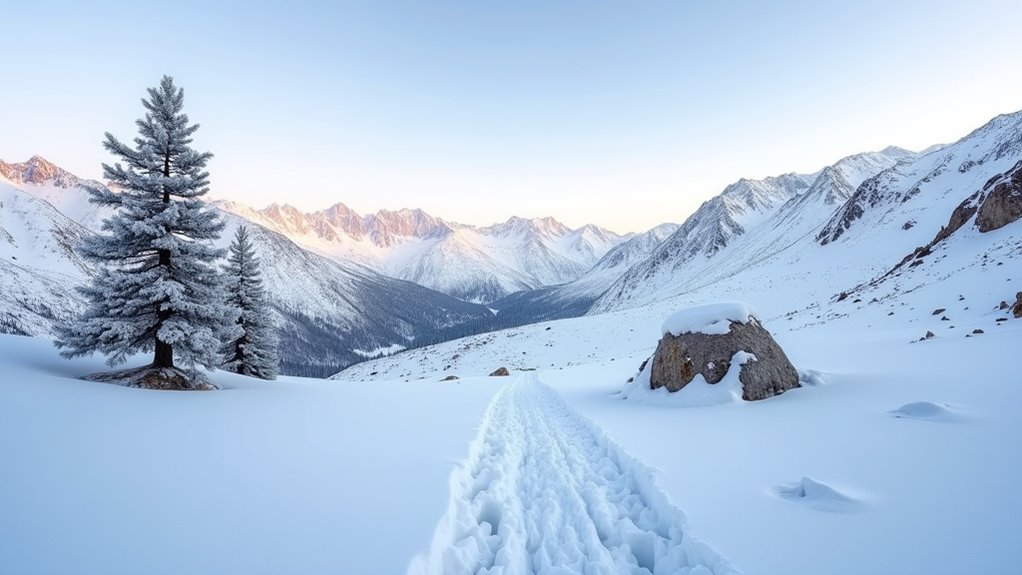
Mysterious sub-zero destinations across India offer bone-chilling adventures where temperatures plummet to a staggering -45°C.
India’s coldest destinations offer extreme winter experiences unlike anywhere else. You’ll find temperatures plummeting to -45°C in Dras Valley (India’s “Siberia”), below -30°C at Siachen Glacier, and around -16°C in Leh’s high-altitude desert. Spiti Valley, Gulmarg, and Lachen & Thangu Valley complete the list of breathtaking frozen landscapes. Each destination combines unique cultural experiences with challenging climates that require proper preparation and local guidance for an unforgettable winter adventure.
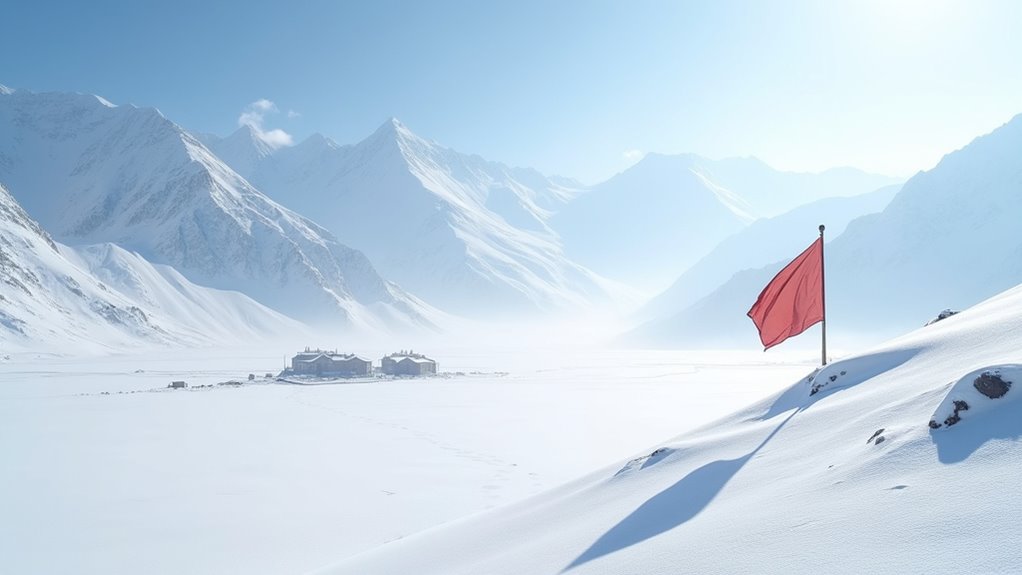
Where in India can you find temperatures that plummet to a bone-chilling -45°C? Welcome to Dras Valley in Ladakh, often referred to as India’s coldest inhabited place. This high-altitude region experiences a dry summer continental climate with extreme seasonal variations.
When you visit between October and May, you’ll face the harshest winter conditions with temperatures routinely dropping below -22°C. The valley receives 2-5 meters of snowfall in villages, transforming the landscape into a frozen wonderland. January stands out as the coldest month with average temperatures reaching -6.18°C.
For a more comfortable experience, plan your trip during the brief summer from June to September when temperatures hover around 15°C. Despite challenging conditions, the valley offers remarkable opportunities to explore the Dras War Memorial, enjoy stunning vistas, and experience unique local cultures.
As extreme as Dras Valley’s conditions are, they pale in comparison to Siachen Glacier, India’s most unforgiving frozen landscape. Stretching 78 kilometers through the Eastern Karakoram, it’s the longest glacier in the range and second-longest nonpolar glacier worldwide.
You’ll find temperatures plummeting below -30°C in winter, making it aptly known as the world’s highest battlefield. Since 1984’s Operation Meghdoot, Indian forces have maintained control of strategic positions despite more casualties from the harsh environment than combat. Winter temperatures in the higher regions can reach as low as −40 °F.
The glacier sits at elevations between 5,400 and 7,000 meters above sea level, surrounded by snow-capped peaks and treacherous terrain. Soldiers require specialized training and equipment to survive this pristine yet perilous region where blizzards, crevasses, and avalanches pose constant threats.
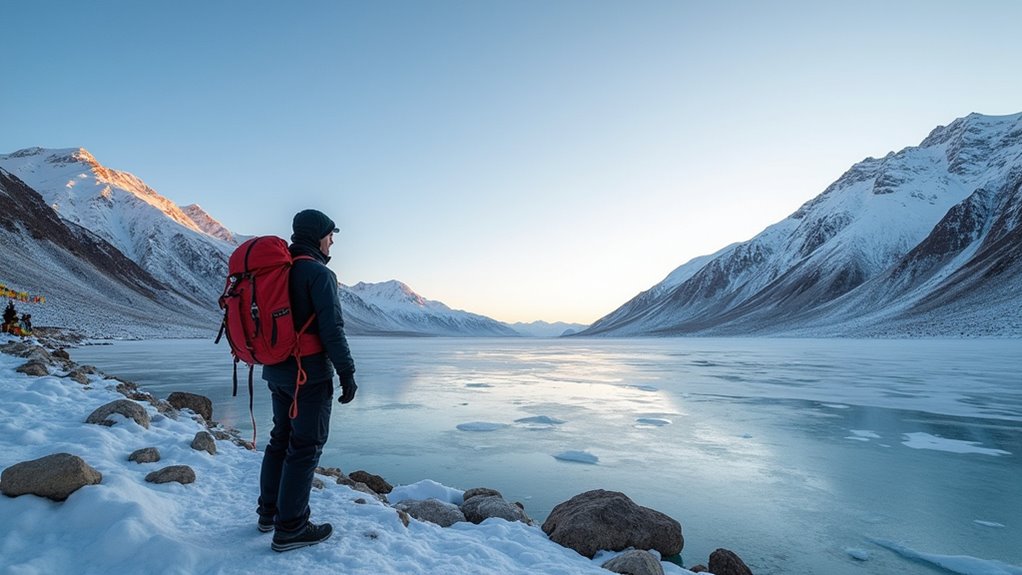
Leh, the high-altitude desert capital of Ladakh, transforms dramatically during winter when temperatures plummet to as low as -16°C. January stands as the coldest month, with nighttime temperatures frequently dropping to -15°C or lower in this arid landscape.
Despite receiving minimal rainfall (only 90mm annually) and enjoying over 300 days of sunshine, winter turns this cold desert region into a frozen wonderland from October through March. The coldest period extends approximately 3.5 months from November 30 to March 14, with daily high temperatures below 35°F. You’ll experience extreme temperature fluctuations between day and night, making proper layered clothing essential.
While winter tourism presents challenges due to limited infrastructure and harsh conditions, you’ll be rewarded with breathtaking snow-covered landscapes and unique cultural experiences. If you’re planning a visit, prepare for high-altitude conditions and book accommodations well in advance.
While Leh represents Ladakh’s frozen beauty, Spiti Valley offers an even more extreme cold-weather experience. Nestled in Himachal Pradesh at an average elevation of 3,800 meters, this high-altitude cold desert borders Tibet and features barren mountains and rocky landscapes.
Winter temperatures here can plummet to a bone-chilling -27°C at night, with January seeing heavy snowfall and daytime temperatures rarely exceeding 11°C. You’ll find the most favorable conditions from May to October when the valley becomes more accessible. Often referred to as The Middle Land, Spiti Valley serves as a cultural bridge between India and Tibet with its ancient monasteries and breathtaking views.
The valley’s unique rain shadow location means limited precipitation, with February being the wettest month at 110mm and October the driest at 15mm. Despite these harsh conditions, local communities have adapted their lifestyles to embrace this Arctic-like environment where glacial streams sustain agriculture during warmer months.
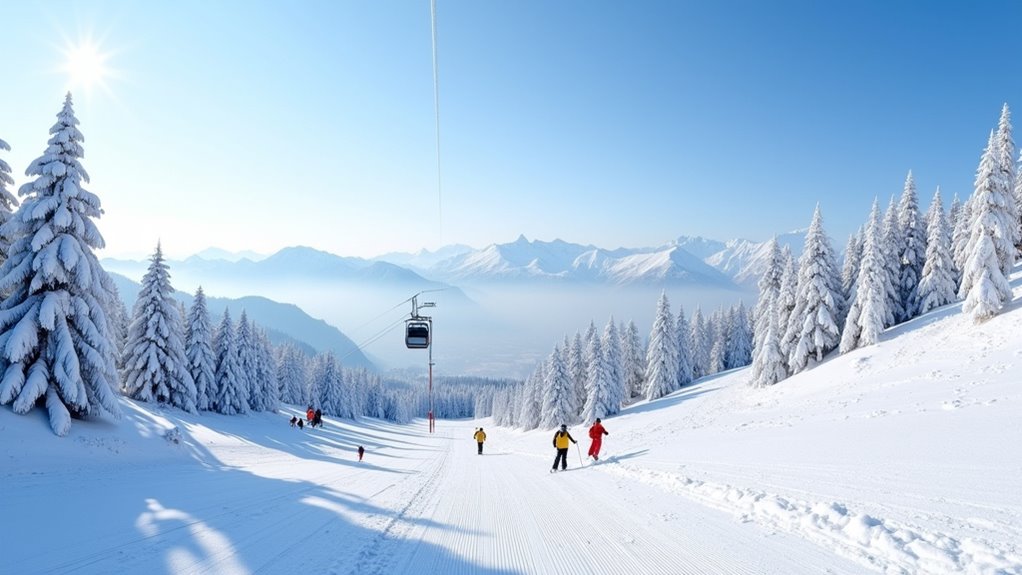
Nestled in the majestic Pir Panjal Range of the Himalayas, Gulmarg transforms into a breathtaking winter wonderland when temperatures plummet to −9°C in January. Sitting at an elevation of approximately 2,650 meters, this cup-shaped valley is located just 52 km from Srinagar.
Gulmarg’s snow-blanketed Himalayan valley beckons adventurers to its pristine winter paradise, just a short journey from Srinagar.
When you visit this premier skiing destination, you’ll experience:
The region receives significant precipitation throughout the year, with an impressive 1705 mm annually contributing to its lush landscapes and abundant snowfall. A warming climate trend (1.04°C increase over 37 years) is affecting snow patterns in the region. Despite these climate changes, Gulmarg remains a critical watershed in the upper Indus basin, with snowmelt feeding rivers essential for the region’s agriculture and livelihood.
Hidden deep within northern Sikkim, Lachen and Thangu Valley form one of India’s least explored frozen paradises at elevations reaching 3,900 meters. You’ll find the valley blanketed in snow most of the year, with temperatures plummeting below zero during winter months.
Visit between March and June when alpine flowers bloom and the harsh cold subsides. Thangu serves as a gateway to Gurudongmar Lake (17,800 feet) and offers short treks to Chopta Valley and Green Lake. The valley is located within Mangan district approximately 30 km north of Lachen.
The area is governed by the traditional Dzumsa system and primarily inhabited by Bhutia and Tibetan communities. While accommodations in Thangu remain basic, nearby Lachen provides better facilities and cultural attractions like the monastery and handicraft centers.
Don’t miss the Thangu Yak Race if you’re visiting during summer.
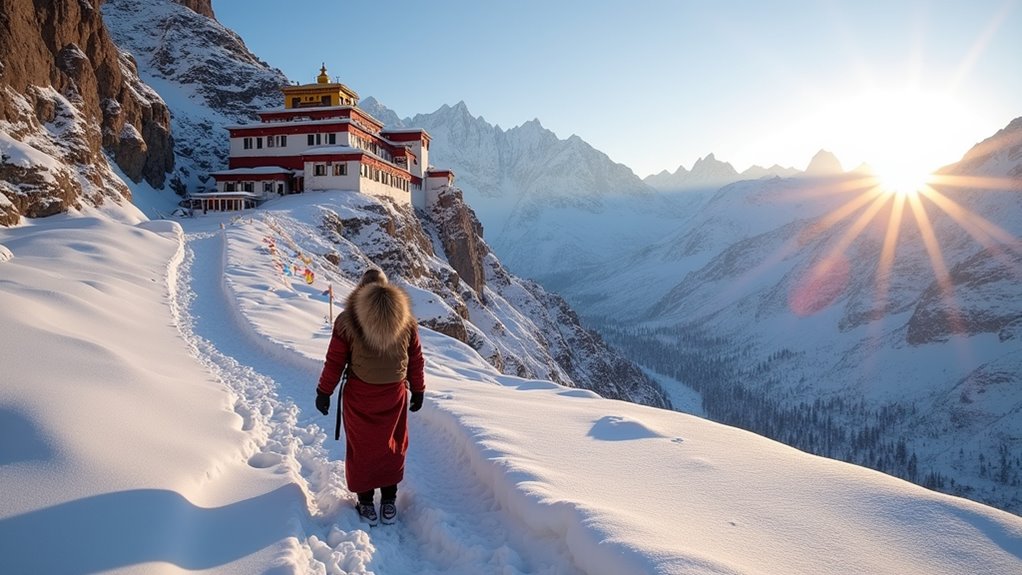
Braving India’s coldest destinations requires thorough preparation and knowledge of extreme weather conditions. Places like Dras Valley can plummet to -45°C (-49°F), demanding strategic planning for your safety and comfort.
Before setting out on your cold-weather adventure, consider these essentials:
The Himalayan mountain range creates a distinct continental climate in Northern India with particularly cold winters compared to other regions at similar latitudes.
Hiring local guides can provide invaluable safety insights while supporting regional economies during your unforgettable winter journey.
While you’ll find scorching deserts and humid coastlines across India, these seven icy destinations offer a completely different experience. You’re witnessing nature at its most extreme—where soldiers brave -50°C at Siachen while travelers snap photos in Gulmarg’s gentle snowfall. Don’t underestimate these landscapes. Pack specialized cold-weather gear, acclimatize properly, and respect local conditions. India’s coldest places are both breathtakingly beautiful and potentially dangerous.